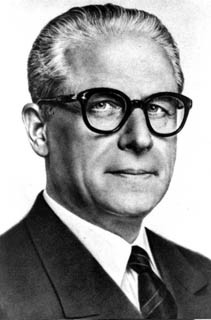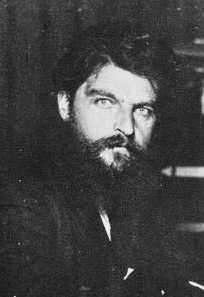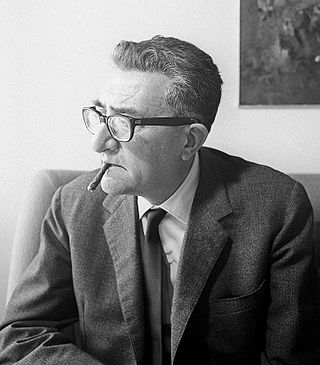
Christian Democracy was a Christian democratic political party in Italy. The DC was founded on 15 December 1943 in the Italian Social Republic as the nominal successor of the Italian People's Party, which had the same symbol, a crusader shield. As a Catholic-inspired, centrist, catch-all party comprising both centre-right and centre-left political factions, the DC played a dominant role in the politics of Italy for fifty years, and had been part of the government from soon after its inception until its final demise on 16 January 1994 amid the Tangentopoli scandals. Christian Democrats led the Italian government continuously from 1946 until 1981. The party was nicknamed the "White Whale" due to its huge organisation and official colour. During its time in government, the Italian Communist Party was the largest opposition party.
The relations between the Catholic Church and the state have been constantly evolving with various forms of government, some of them controversial in retrospect. In its history, the Church has had to deal with various concepts and systems of governance, from the Roman Empire to the medieval divine right of kings, from nineteenth- and twentieth-century concepts of democracy and pluralism to the appearance of left- and right-wing dictatorial regimes. The Second Vatican Council's decree Dignitatis humanae stated that religious freedom is a civil right that should be recognized in constitutional law.

Gaetano Salvemini was an Italian socialist and anti-fascist politician, historian, and writer. Born in a family of modest means, he became an acclaimed historian both in Italy and abroad, particularly in the United States, after he was forced into exile by Benito Mussolini's Italian fascist regime.
Clerical fascism is an ideology that combines the political and economic doctrines of fascism with clericalism. The term has been used to describe organizations and movements that combine religious elements with fascism, receive support from religious organizations which espouse sympathy for fascism, or fascist regimes in which clergy play a leading role.

The March on Rome was an organized mass demonstration in October 1922 which resulted in Benito Mussolini's National Fascist Party ascending to power in the Kingdom of Italy. In late October 1922, Fascist Party leaders planned a march on the capital. On 28 October, the fascist demonstrators and Blackshirt paramilitaries approached Rome; Prime Minister Luigi Facta wished to declare a state of siege, but this was overruled by King Victor Emmanuel III, who, fearing bloodshed, persuaded Facta to resign by threatening to abdicate. On 30 October 1922, the King appointed Mussolini as Prime Minister, thereby transferring political power to the fascists without armed conflict. On 31 October the fascist Blackshirts paraded in Rome, while Mussolini formed his coalition government.

Mario Scelba was an Italian politician who served as the 33rd prime minister of Italy from February 1954 to July 1955. A founder of the Christian Democracy, Scelba was one of the longest-serving Minister of the Interior in the history of the republic, having served at the Viminale Palace in three distinct terms from 1947 to 1962. A fervent pro-Europeanist, he was also President of the European Parliament from March 1969 to March 1971.

Ferruccio Parri was an Italian partisan and anti-fascist politician who served as the 29th Prime Minister of Italy, and the first to be appointed after the end of World War II. During the war, he was also known by his nom de guerreMaurizio.

Luigi Sturzo was an Italian Catholic priest and prominent politician. He was known in his lifetime as a Christian socialist and is considered one of the fathers of the Christian democratic platform. He was also the founder of the Luigi Sturzo Institute in 1951. Sturzo was one of the founders of the Italian People's Party (PPI) in 1919 but was forced into exile in 1924 with the rise of Italian fascism, and later in 1943 Christian Democracy, although he was never a party member. In exile in London and later New York City, he published over 400 articles critical of fascism. Sturzo's cause for canonization opened on 23 March 2002 and he is titled as a Servant of God.

The Italian Socialist Party was a social-democratic and democratic-socialist political party in Italy, whose history stretched for longer than a century, making it one of the longest-living parties of the country. Founded in Genoa in 1892, the PSI was from the beginning a big tent of Italy's political left and socialism, ranging from the revolutionary socialism of Andrea Costa to the Marxist-inspired reformist socialism of Filippo Turati and the anarchism of Anna Kuliscioff. Under Turati's leadership, the party was a frequent ally of the Italian Republican Party and the Italian Radical Party at the parliamentary level, while lately entering in dialogue with the remnants of the Historical Left and the Liberal Union during Giovanni Giolitti's governments to ensure representation for the labour movement and the working class. In the 1900s and 1910s, the PSI achieved significant electoral success, becoming Italy's first party in 1919 and during the country's Biennio Rosso in 1921, when it was victim of violent paramilitary activities from the far right, and was not able to move the country in the revolutionary direction it wanted.

Giovanni Gronchi, was an Italian politician from Christian Democracy who served as the president of Italy from 1955 to 1962 and was marked by a controversial and failed attempt to bring about an "opening to the left" in Italian politics. He was reputed the real holder of the executive power in Italy from 1955 to 1962, behind the various Prime Ministers of this time.

The Italian Liberal Party was a liberal political party in Italy.

General elections were held in Italy on 16 November 1919. The fragmented Liberal governing coalition lost the absolute majority in the Chamber of Deputies, due to the success of the Italian Socialist Party and the Italian People's Party.

Nicola Bombacci was an Italian Marxist revolutionary and later a fascist politician. He began in the Italian Socialist Party as an opponent of the reformist wing and became a founding member of the Communist Party of Italy in 1921, sitting on the fifteen-man Central Committee. During the latter part of his life, particularly during the Second World War, Bombacci allied with Benito Mussolini and the Italian Social Republic against the Allied invasion of Italy. He met his death after being shot by communist partisans and his body was subsequently strung up in Piazzale Loreto.

The Italian Radical Party, also known as the Historical Radical Party, was a political party in Italy. Heir of the Historical Far Left and representative of Italy's political left in its beginning, with the rise of the Italian Socialist Party, it came to represent centre-left politics. The party was associated with classical radicalism, republicanism, secularism, social liberalism, and anti-clericalism.

Riccardo Lombardi was an Italian politician.
The Pentapartito, commonly shortened to CAF, refers to the coalition government of five Italian political parties that formed between June 1981 and April 1991. The pro-European and Atlanticist coalition comprised the Christian Democracy (DC), the Italian Socialist Party (PSI), Italian Democratic Socialist Party (PSDI), Italian Liberal Party (PLI), and Italian Republican Party (PRI).
Events from the year 1919 in Italy.
Events from the year 1921 in Italy.
Alcide Cervi (1875-1970) is the patriarch of an Italian family noted for partisan activities that resisted the Italian fascist regime. He is the father of the Cervi Brothers, who were executed during the struggle against Fascism.














